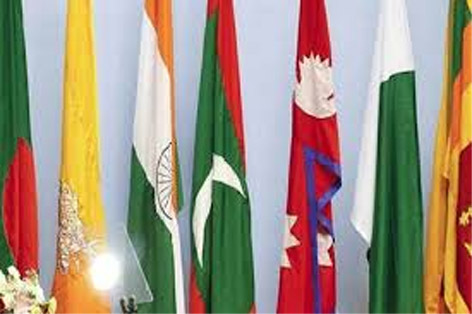Islamabad/Dhaka, Apr 26: The SAARC countries have rolled out a raft of stimulus packages to boost investments, buffer private businesses and bolster growth in response to the COVID-19 pandemic that has upended life and disrupted economic activity in a region inhabited by over 1.8 billion people.
The World Bank recently warned that South Asia faces its worst economic performance in 40 years due to the deadly coronavirus pandemic which has been wreaking havoc worldwide.
It advised the governments to “ramp up action to curb the health emergency, protect their people, especially the poorest and most vulnerable, and set the stage now for fast economic recovery”.
India, a USD 2.9 trillion economy – the biggest in the 8-member SAARC grouping, responded by unveiling a Rs 1.7 lakh crore (USD 22.6 billion) economic stimulus plan, providing direct cash transfer to poor senior citizens and women and free foodgrain and cooking gas to give relief to millions hit by the lockdown.
The central bank cut the key interest rate by 75 basis points to make loans cheaper and provided Rs 1 lakh crore of liquidity to the market. Also, a moratorium on repayment of loans for three months has been provided.
The government has suspended the Insolvency and Bankruptcy Code for 6 to 12 months to give breathing space to companies trying to secure the necessary financing, renegotiating loans, and attempting to secure other reliefs from banks.
In Pakistan, when Prime Minister Imran Khan announced the lockdown last month, there was little resistance initially from the private sector. But, as it prolonged, unrest slowly started brewing among small businesses and shopkeepers who feared that they may not sustain the prolonged closure.
To pacify their concerns, the government announced a Rs 1.2 lakh crore rescue package to help businesses and vulnerable people. Separately, the government has decided to allocate Rs 7,500 crore for small and medium enterprises.
“We have given Rs 20,000 crore in tax refund to various businessmen so that they have money with them,” Khan said.
Pakistan’s central bank has reduced the interest rate from 13.25 to 9 per cent since late March in response to the demand from the private sector. It has also agreed to give concessional loans at 4-5 per cent to businesses.
Bangladesh has announced a USD 11.6 billion stimulus package to support the economy, with a primary focus on supporting the manufacturing and service sectors, agriculture and social safety nets.
“This support package is equivalent to 3.5 per cent of our GDP,” Prime Minister Sheikh Hasina said on Friday.
The Bangladesh Garments Manufacturers and Exporters Association has said that orders worth about USD 3.2 billion were cancelled or suspended, affecting over 2.3 million workers. The textile sector, a major forex earner, directly employs more than 4.5 million people, mostly women.
Sri Lanka’s economy, hit by the COVID-19, is struggling to overcome the crisis.
On March 31, the central bank announced a USD 250 million refinancing facility for banks, enabling them to expand their lending capacity by Rs 40,000 crores to businesses, offer loan repayment moratoriums and provide working capital at 4 per cent interest.
Sri Lanka is also planning to enter into an agreement with the Reserve Bank of India for a currency swap worth USD 400 million to boost the foreign reserves and ensure financial stability.
Nepal’s business sector is expected to suffer a loss of around USD 1.25 billion due to the halting of economic activities during the lockdown, says Umesh Lal Shrestha, Vice President Associate, Federation of Nepalese Chamber of Commerce and Industries.
Nepal’s tourism sector is the worst hit by the pandemic. The Hotel Association of Nepal has projected that the hotel business income will decline by 90 per cent in 2020 and has asked the government to adopt special measures to protect the industry.
The government has cancelled the ‘Visit Nepal Year 2020’ that aimed to attract two million tourists, in view of the global pandemic. It has announced a relief package which includes a 25 per cent discount on electricity.
The Maldives government has announced an emergency 2.5 billion Maldivian rufiyaa (USD 161.8 million) stimulus package to shore up the local economy against the coronavirus pandemic, a local media report said.
The stimulus plan includes MVR 1.55 billion (USD 100 million) in emergency loans for businesses to meet short-term working capital needs.
The Bank of Maldives has announced a USD 2 million short-term financing facility for the tourism industry, which contributes to the bulk of the island nation’s state revenue and foreign reserves.
Bhutan’s economy is having its worst year in the recent history with the GDP growth projected to decline by anywhere between 1-2 per cent depending on how long the pandemic lasts, Kuensel newspaper quoted economic affairs minister Loknath Sharma as saying.
The government wants to continue construction of hydropower projects to minimise the impact from COVID-19 and revive the land-locked country’s economy. Electricity constitutes about 13 per cent of Bhutan’s GDP, the report said.
Afghanistan is a heavily aid-reliant and import-dependent economy. The coronavirus outbreak has further dented an already troubled economy.
The Afghan government has allocated about USD 25 million to deal with the crisis. The World Bank has approved a USD 100.4 million grant to support the war-torn country’s weak economy. (PTI)
Home Internation-left SAARC nations unveil emergency stimulus packages to tackle COVID-19 economic fallout


